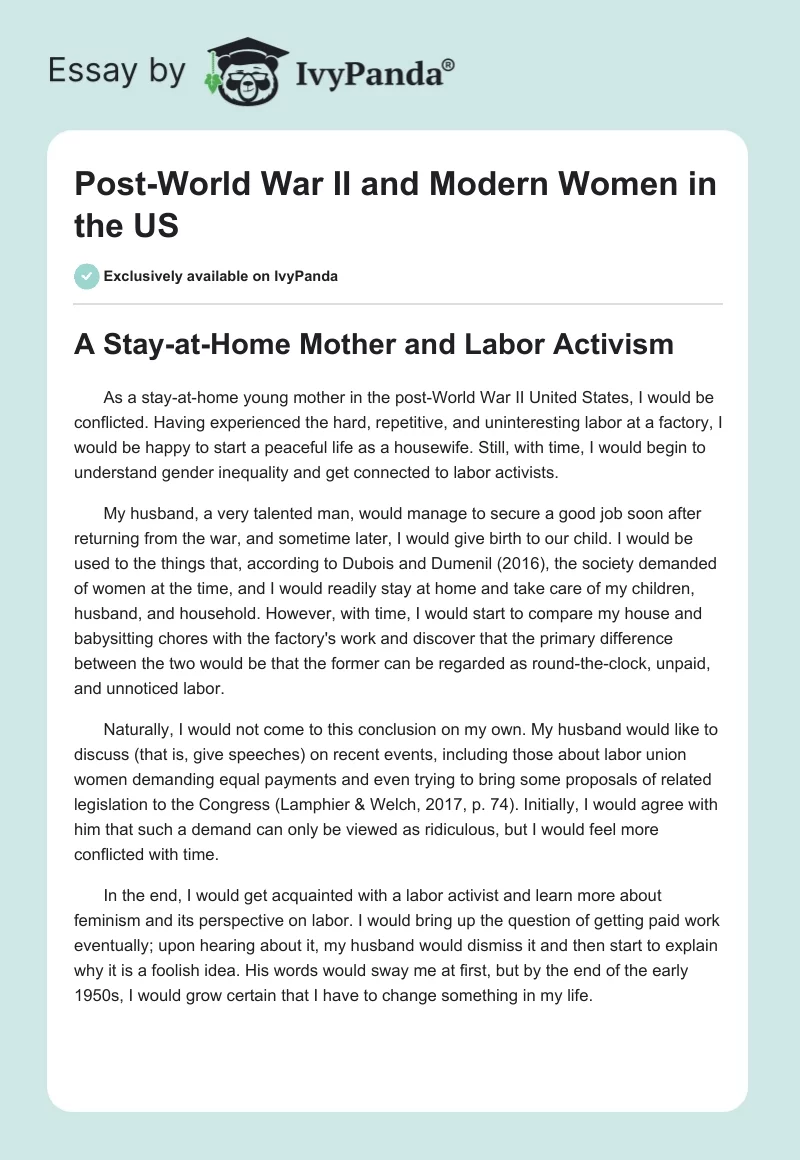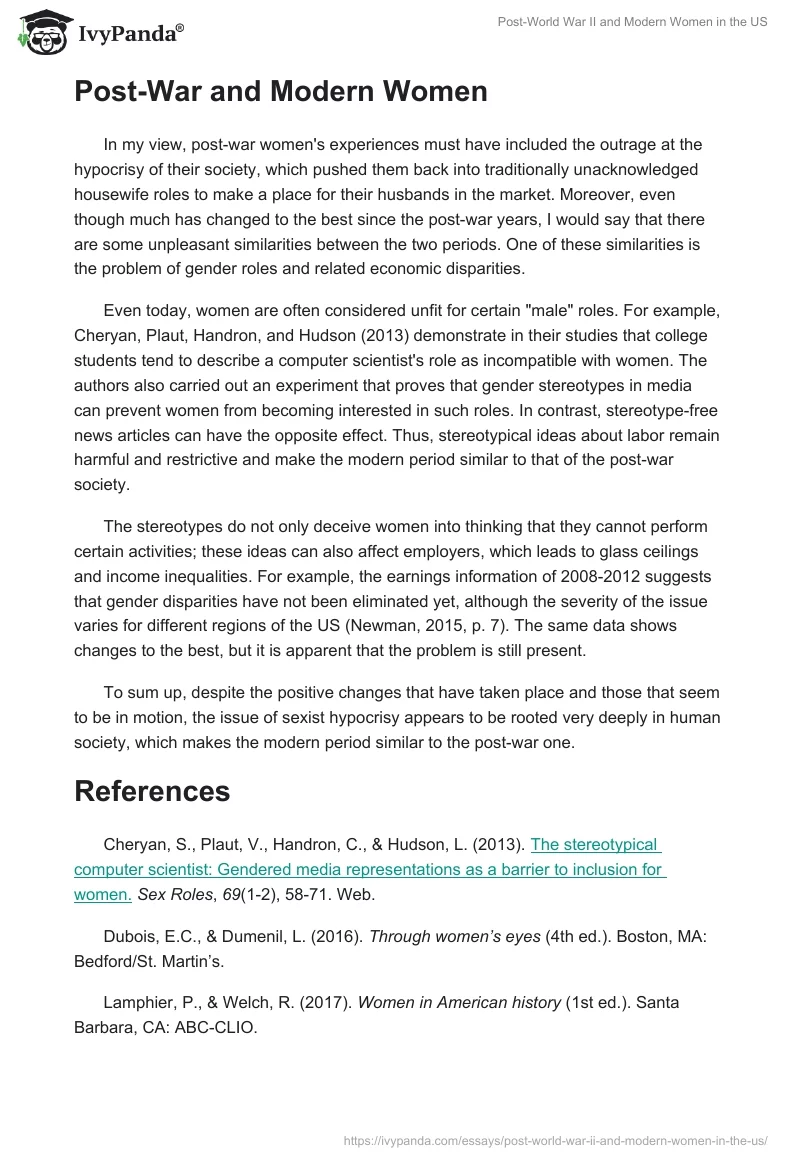A Stay-at-Home Mother and Labor Activism
As a stay-at-home young mother in the post-World War II United States, I would be conflicted. Having experienced the hard, repetitive, and uninteresting labor at a factory, I would be happy to start a peaceful life as a housewife. Still, with time, I would begin to understand gender inequality and get connected to labor activists.
My husband, a very talented man, would manage to secure a good job soon after returning from the war, and sometime later, I would give birth to our child. I would be used to the things that, according to Dubois and Dumenil (2016), the society demanded of women at the time, and I would readily stay at home and take care of my children, husband, and household. However, with time, I would start to compare my house and babysitting chores with the factory’s work and discover that the primary difference between the two would be that the former can be regarded as round-the-clock, unpaid, and unnoticed labor.
Naturally, I would not come to this conclusion on my own. My husband would like to discuss (that is, give speeches) on recent events, including those about labor union women demanding equal payments and even trying to bring some proposals of related legislation to the Congress (Lamphier & Welch, 2017, p. 74). Initially, I would agree with him that such a demand can only be viewed as ridiculous, but I would feel more conflicted with time.
In the end, I would get acquainted with a labor activist and learn more about feminism and its perspective on labor. I would bring up the question of getting paid work eventually; upon hearing about it, my husband would dismiss it and then start to explain why it is a foolish idea. His words would sway me at first, but by the end of the early 1950s, I would grow certain that I have to change something in my life.
Post-War and Modern Women
In my view, post-war women’s experiences must have included the outrage at the hypocrisy of their society, which pushed them back into traditionally unacknowledged housewife roles to make a place for their husbands in the market. Moreover, even though much has changed to the best since the post-war years, I would say that there are some unpleasant similarities between the two periods. One of these similarities is the problem of gender roles and related economic disparities.
Even today, women are often considered unfit for certain “male” roles. For example, Cheryan, Plaut, Handron, and Hudson (2013) demonstrate in their studies that college students tend to describe a computer scientist’s role as incompatible with women. The authors also carried out an experiment that proves that gender stereotypes in media can prevent women from becoming interested in such roles. In contrast, stereotype-free news articles can have the opposite effect. Thus, stereotypical ideas about labor remain harmful and restrictive and make the modern period similar to that of the post-war society.
The stereotypes do not only deceive women into thinking that they cannot perform certain activities; these ideas can also affect employers, which leads to glass ceilings and income inequalities. For example, the earnings information of 2008-2012 suggests that gender disparities have not been eliminated yet, although the severity of the issue varies for different regions of the US (Newman, 2015, p. 7). The same data shows changes to the best, but it is apparent that the problem is still present.
To sum up, despite the positive changes that have taken place and those that seem to be in motion, the issue of sexist hypocrisy appears to be rooted very deeply in human society, which makes the modern period similar to the post-war one.
References
Cheryan, S., Plaut, V., Handron, C., & Hudson, L. (2013). The stereotypical computer scientist: Gendered media representations as a barrier to inclusion for women.Sex Roles, 69(1-2), 58-71. Web.
Dubois, E.C., & Dumenil, L. (2016). Through women’s eyes (4th ed.). Boston, MA: Bedford/St. Martin’s.
Lamphier, P., & Welch, R. (2017). Women in American history (1st ed.). Santa Barbara, CA: ABC-CLIO.
Newman, B. (2015). Breaking the glass ceiling: Local gender-based earnings inequality and women’s belief in the American dream.American Journal of Political Science, 60(4), 1006-1025. Web.


